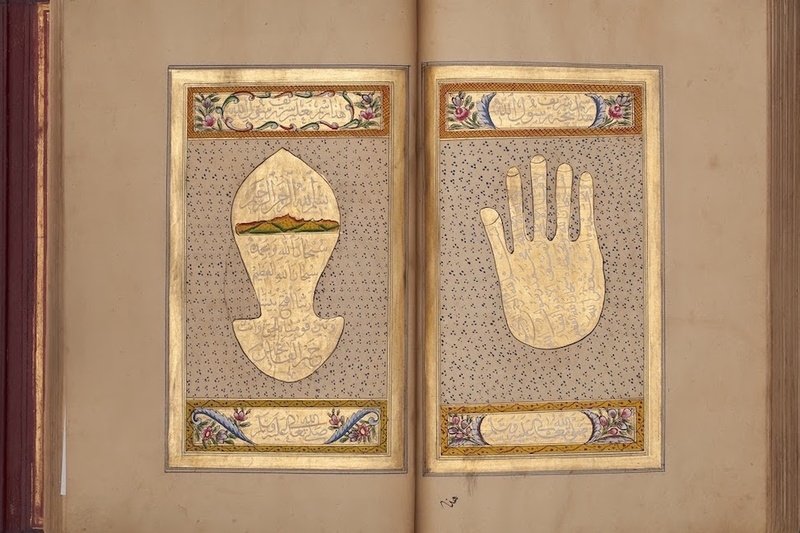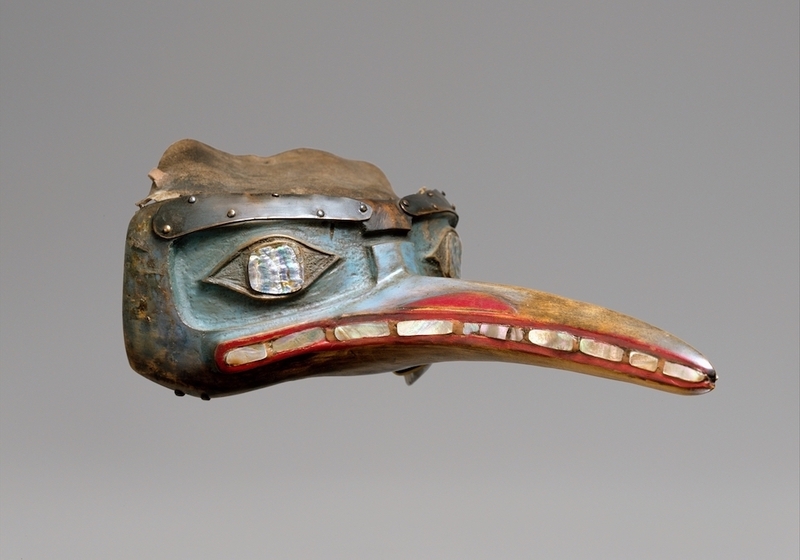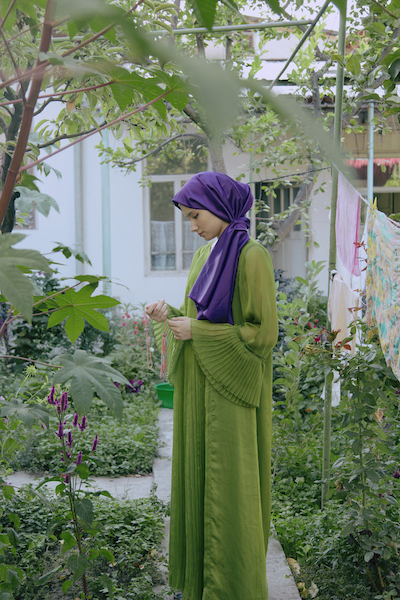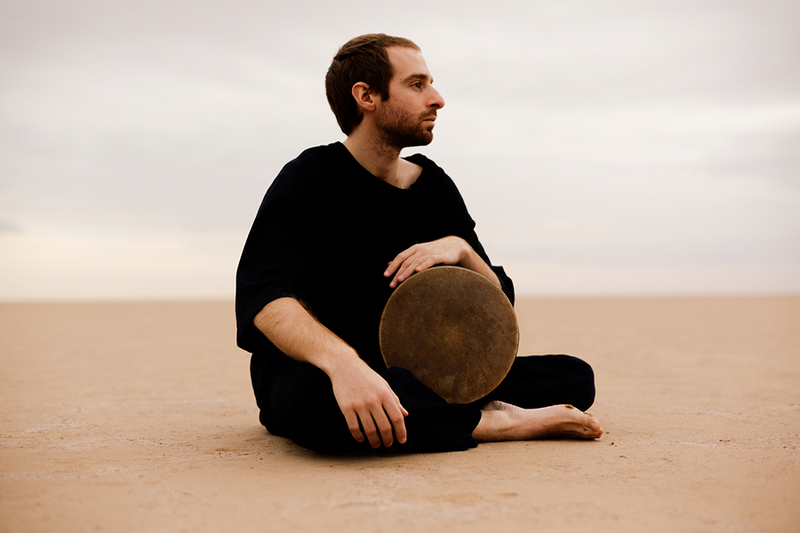
State Museum of Oriental Art
The exhibition Splendor of the Sunset: Iran of the Qajar Era, dedicated to the artistic legacy of the Qajar dynasty, is open in the Moscow State Museum of Oriental Art until July 25th. The rulers of this dynasty came to power in Iran in the late 18th century and this era was characterized by a simultaneous interest in European cultures and the glorification of Iran's own history. We asked curator Polina Korotchikova to talk about one of the works presented at the exhibition— a portrait of a beautiful woman that reflects the ideals and hopes of Iranians during that time.
With the ascension of the second ruler of the Qajar dynasty, Fat’h-Ali Shah, to the throne, a new type of portrait appeared: that of beautiful women. The images we see on these portraits represent an ideal woman of that time, with concubines from the Shah harem often meant to be the basis of this ideal. The women in these pictures are, on the one hand, utterly idealized, and on the other—quite real, because their images and desirable qualities correlated with the structure of Iranian society.
This type of painting was hung in the male half of the house and meant as decoration. Works of various quality have been preserved—some of them are simpler and were meant to be affordable for people of moderate means, such as provincial governors or landowners, while some were very expensive. Demand for such paintings was very high: it was fashionable to have at least one such portrait.
This text takes a look at one of the portraits made by an unknown Iranian painter in the 19th century: Woman at the Window.
Beauty: Cosmetics and the Body

Cosmetics and fragrances
In Qajar Iran, a cosmetic haft-rang (an expression literally translates to “seven colors”) set was frequently used. The set was composed of seven elements: henna, basma, surma (kajal), blush, perfume, beauty mark, and white face paint. The latter was made from ground animal bone and animal fat. A painted or stick-on fake beauty mark could be placed anywhere—there was nothing akin to the European courtly beauty spot language in Iran.
Iran did not have the kind of incense and perfumes that we imagine when we think of the East. The idea that one should smell “nice” was also not widespread. People used the simplest kind of soap—it was made from sheep fat and smelled like sheep fat. Fragrant soap was imported from Turkey. Women first used it on the eve of their wedding; before that they were not supposed to enjoy such a luxury and they smelled just like everyone else. Rose water was a universal skin care product—it was sprayed onto the body and used to wipe the face. Rose water was a tonic, a cream, and a perfume. Furthermore, it was thought that it has antiseptic properties.
Face
A beautiful woman had to be moon-faced—with a round face and small, pouty lips. The beauty standard for the ideal shape of eyebrows was universal: for men as well as women, the two eyebrows were supposed to be joined at the bridge of the nose. If a woman did not have such eyebrows naturally, they were painted on with a dark surma-based dye, which gave the eyebrows a bluish tint. For hair and eyes, a burnished black or an indigo color was considered in vogue.

Tattoos
Hands and feet, including soles, fingers and toes, were covered in henna. This was also considered fashionable for both men and women. Just as in the case of eyebrows, we can speak of a certain fashion, widespread at the time—that of masculinity. Playing with masculinity and femininity was a general characteristic of local culture—it was practiced already at the time of the Safavid dynastySafavid dynastyThe Safavids ruled from 1501 to 1722 and at their height of their rule controlled all of what is now Iran, Azerbaijan, Bahrain, Armenia, eastern Georgia, parts of the North Caucasus including some of Russia, Iraq, Kuwait, and Afghanistan, as well as parts of Turkey, Syria, Pakistan, Turkmenistan and Uzbekistan. In Middle Ages sources it was also referred to as the Qizilbash state.. Young barefaced men were depicted along with beautiful women so that both men and women looked exactly the same. Women could also have small images permanently tattooed on their hands and chests.
Belly
Women of moderate means watched and kept the household. They didn’t go to the market; that was done by men. A nurse took care of the children and rich ladies even had gossip delivered straight to their homes. Thus, most women became homely matrons and, for several reasons, rather quickly gained weight. This became a part of the aesthetic—corpulence was not taken to be unattractive.
Hair
Depilation was one of the procedures done at the bathhouse. A woman first removed her body hair, then bathed, and finally dyed her hair. Unwanted hair was not shaved, but burned, using a rather corrosive mixture containing arsenic or arsenic sulfide. When applied improperly, it caused painful burns. Upper lip hair was not removed. It was considered good if a woman had some, but it was also not an issue if she did not. Unlike eyebrows, this hair was not painted on. Such an attitude is also related to a peculiar perception of beauty and outward appearance in Qajar culture: men and women could look the same.
Fashion: Clothes and Jewelry

Hat with a rose
Women often wore various hats that were pinned to the hair and covered half or two thirds of the head. Flowers, according to season, could also be attached to the hat. In the case of this particular painting, it is not clear whether the image is realistic or made according to the tradition of depicting a beautiful woman along with a fruit or flower. Starch could be applied to the hair, as its appearance was considered similar to pearls.
A string of beads under the hat was an obligatory element in Iranian jewellery-making starting in the 15th century. A string of pearls was worn under the chin and attached to the hat or to pendants. In addition to pearls, the beauty in this portrait is also wearing emeralds, spinel (a red colored jewel), and rubies.
Shirts
A sheer undershirt with a slit up until the belly button was called a pirohan. An outer blouse was known as a nimtene. Both men and women liked to let the cuffs of their undershirts show: they were folded to show the inner side, especially if it was embroidered. Travellers from the beginning of the 19th century wrote that Iranian women were unlike those belonging to other nations in the region who would try to hide as much of their body as they can in baggy clothes. Quite the contrary, in Iran, women wore clothes fitted tightly to their figure. However, in this case the travellers were referring to what the women wore in the harem to look attractive. They usually didn’t go outside but if they did, they wore veils like other muslim women.
Scarf sash
This kind of scarf is another fashion accessory that was to men and women. During Qajar rule, these items were produced locally following the model of cashmere scarves from India; this production was a source of considerable pride. The fabrics were made from goat wool. They were sometimes painted and clothes were made from them, including nimtene blouses. At some point, productions began to close because of competition with imported goods. The Shahs tried to save them by demanding that courtiers buy and make clothes from Iranian fabrics only.

Jewellery
The jewellery of the harem women was made from precious and semi-precious stones which at that moment were kept in the Shah treasury. Pearls were very well-loved: large quantities of pearls were gathered from the Persian gulf and used with abandon: Fat’h-Ali Shah had sixteen kilograms of pearls hanging in strings and clusters around his throne. Approximately two-thirds of Shahs’ treasure was composed of Indian precious stones that Nader Shah captured from the MughalsMughalsThe Mughal Empire was a Timurid state that covered the territories of contemporary India, Pakistan, Bangladesh, and southeastern Afghanistan. It existed from 1526 to 1858. during his Indian campaign of 1739. He took with him the entire Mughal treasury by simply splitting the items stored in it into parts: stones separately, gold molten together. These items are still stored in the treasury of the Iran Central Bank—some of it as jewellery, and some just as heaps of stones and gold. Neither the Qajars nor the PahlavisPahlavisPahlavis were part of an Iranian shah dynasty that ruled for just two generations, starting in 1925 when Reza Shah ascended the throne up until 1979 when his son Mohammed Reza was overthrown during the Islamic Revolution.
had managed to turn all of those resources into jewellery—there were just too many raw materials.
Forearm bracelets (bazubands) were also part of the obligatory set of adornments for both sexes. For men, they covered half the forearm, while the women’s versions were a bit smaller and finer. One of the most characteristic Qajar jewellery items were earrings with enamel that were shaped like domed bells. These could be worn in rows of one, two, or three.
Lifestyle: Entertainment and Decor

Alcohol
The decanter and the glass in the beauty’s hands can be explained in various ways. First of all, alcohol acts as an analogy within the poetic associative chain: woman, intoxication, love. Such a comparison was not unique for the culture of Qajar Iran—it came from 16th and 17th century Safavid Iran, and examples of its artistic depiction can be found in many objects. Qajars were an external dynasty, unrelated to the Safavids and without historical ties to Iran. Trying to position themselves as an ancient bloodline, they constantly tried to peek into the past and borrow historical aesthetics. Second of all, the depiction of a pitcher and glass are related to the setup of a traditional house. It was divided into biruni, the official “male” zone, and a “female” zone—andaruni, where people close to the house would gather. The paintings of beautiful women usually decorated the “male” part of the house and served to pleasure the guests. If someone could not afford female dancers or musicians, such paintings were a way of creating a beautiful space. Alcohol was also an attribute of the “male” world: despite the Islamic prohibitions, Persians still drank it but did so in secret.
Hookah
The hookah was smoked equally often by men and women. Due to its popularity, there were even attempts to pass legislation limiting smoking among the Shah’s entourage—people could spend half a day or even a whole day smoking the hookah, which would make court management and court work suffer. In the homes of people with at least moderate means, special servants took care of the hookah and the process of smoking: they lit it up, got it going, washed, cleaned, and polished it. One’s hookah was something akin to a favorite purse. One could take it along when visiting, but this did not apply to the women of the harem, who did not leave the palace.

Entertainment
Depicted beauties could be portrayed as performing acrobatics and circus tricks—doing handstands, tumblesets, or juggling. In reality, these exercises were not as wild as we might imagine: dancing in Qajar was a very peculiar activity. European travellers who described them said that the women simply twirled. Such numbers were performed not by the Shah’s wives, but by concubines, most likely slaves. Everything that was related to music, dancing, and alcohol-drinking was always performed by the women who occupied the lowest ranks in the harem hierarchy. At the harem, theaters were also organized where the women would produce plays for themselves. But one of the most important means of entertainment for women—both those living at the harem, as well as all others—was the bath.

Fabric patterns
Patterns on the fabric refer to the Garden of Eden and classic images of Persian poetry. One example is the gul-u-bulbul (gul means “flower” or “rose” and “bulbul” can be translated as “nightingale”). In this well-known theme, a nightingale falls in love with a rose and sings to it, while the arrogant rose is unmoved by the bird’s amorous song, taking it for granted. This is a story about love, passion, God, Paradise—everything in the world.
Furniture
Cylindrical cushions were called mutaqqa. They were one of the few items of furniture, replacing the back of a sofa and all other elements of furniture. Sitting on the floor, carpets, and mattresses was traditional. During the day, these were rolled up or folded and put away, while in the evening they would be unfolded and rolled out again. In the second half of the 19th century, European furniture appeared as a tribute to fashion. In photographs we often can see people sitting on the carpet and eating on the floor, with chairs and tables standing behind them.
Relationships
The harem was almost a state unto itself: the wives of the Shahs, his children, and the children of his children all lived here, as well as concubines, slaves, people serving the harem, and eunuchs. Girls lived at the harem until they got married, while boys were taken away at the age of six or seven in order to get them used to conducting state affairsaffairsFor example, at the age of seven Naser al-Din participated in the official meeting between his uncle and the Russian Emperor Nikolay the First.. All children born in the harem could take a place at court and attain a certain social status—even those who were born to concubines. The latter could not be heirs to the throne, but could hold positions in the army and diplomatic missions if the Shah was well-disposed towards them. Harems also housed boys who worked as dancers and prostitutes. Sometimes they were dressed in women’s clothes, which perhaps also left its mark on Qajar conceptions of fashion and beauty.
Design by Yulia Semenova
More information about the exhibition can found here





